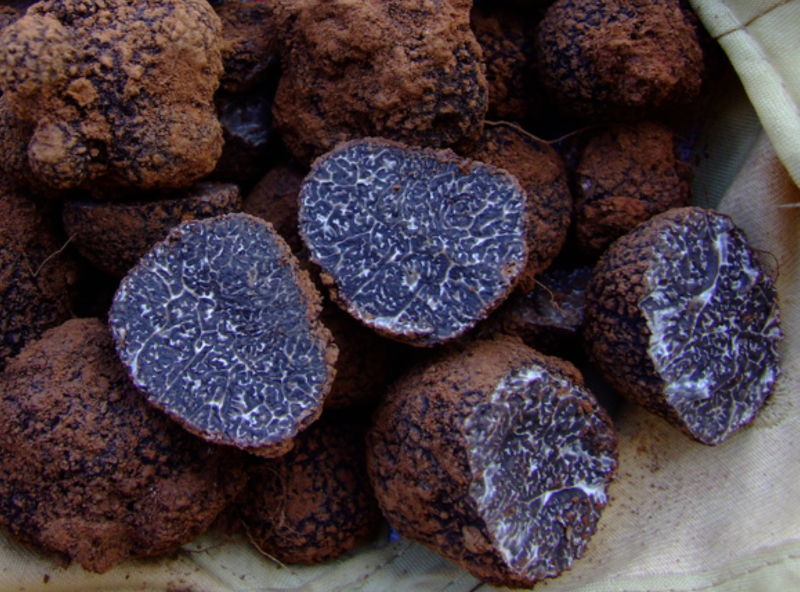
Within the framework of the Mycorrhizal Genomics Initiative (MGI), we are sequencing a phylogenetically and ecologically diverse suite of mycorrhizal fungi, which include the major clades of symbiotic species associating with trees and woody shrubs. Analyses of these genomes will provide insight into the diversity of nutritional and developmental transitions in mycorrhizal fungi.
More specifically, the genome of Tuber indicum was sequenced as part of a project seeking to densely sample members of the Tuberaceae to examine functional diversity of truffles with a shared evolutionary history.
Tuber indicum –– the Chinese Black Truffle
The Chinese Black Truffle (Tuber indicum) belongs to the Tuberaceae (Pezizales, Pezizomycetes). This ectomycorrhizal Ascomycota establishes a mutualistic symbiosis with oak, and mountain pines in the Chinese provinces of Yunnan and Sichuan at an altitude of 2.000 to 2.500 metres in a temperate climate. It produces an hypogeous ascomata. The edible fruit body is harvested in China, and it has been accidentally implanted in North America and Italy. Tuber indicum is morphologically and phylogenetically related to the Perigord black truffle (Tuber melanosporum).
Researchers who wish to publish analyses using data from unpublished CSP genomes are respectfully required to contact the PI (Francis Martin) to avoid potential conflicts on data use and coordinate other publications with the CSP master paper(s).
Genome Reference(s)
Morin E, Murat C, Cichocki N, De la Varga H, Kohler A, Xu J, Grigoriev IV, Martin FM
Draft Genome Sequences of the Black Truffles Tuber brumale Vittad. and Tuber indicum Cook & Massee.
Microbiol Resour Announc. 2021 Jan 28;10(4):. doi: 10.1128/MRA.00799-20
